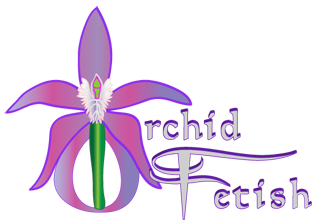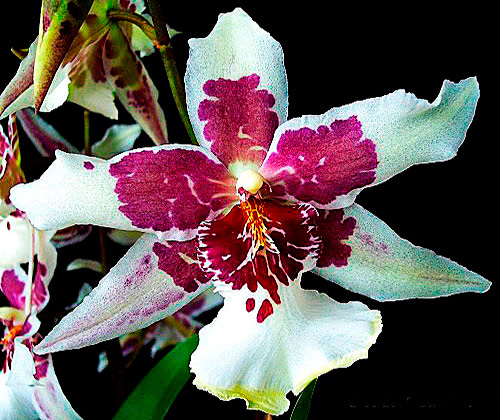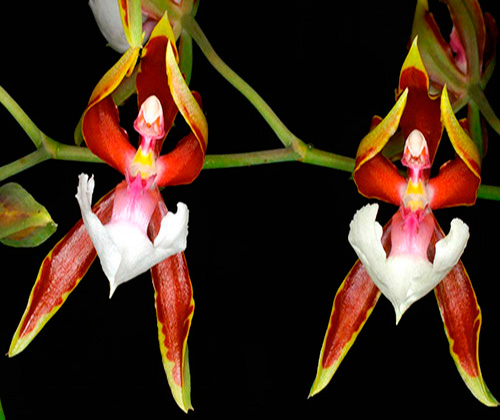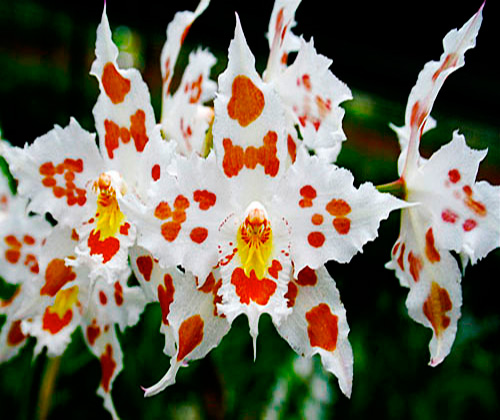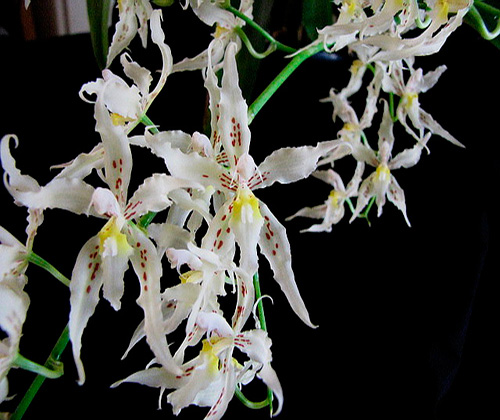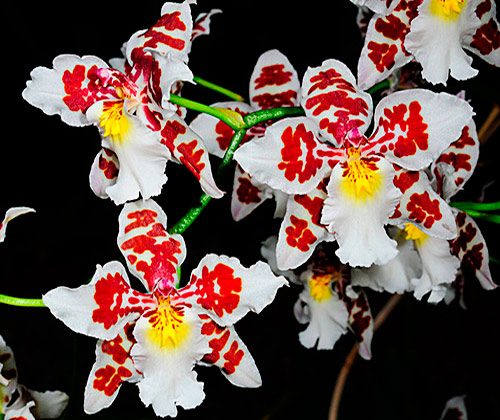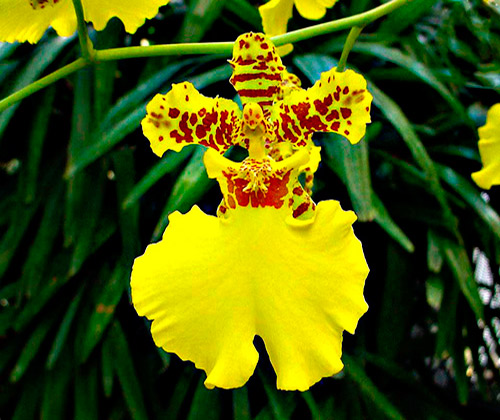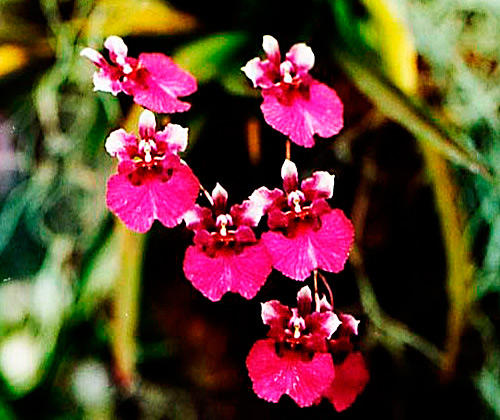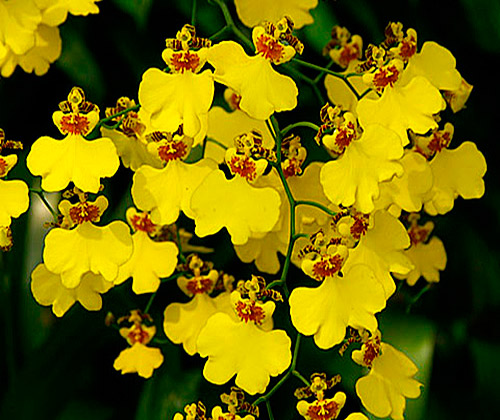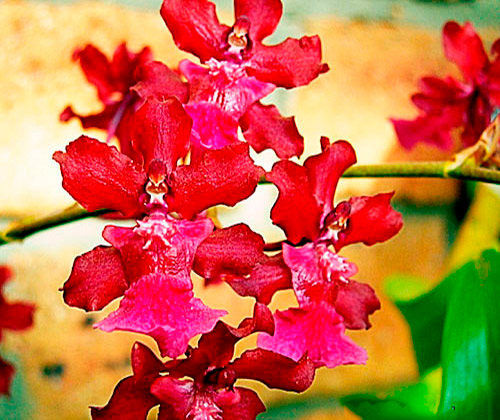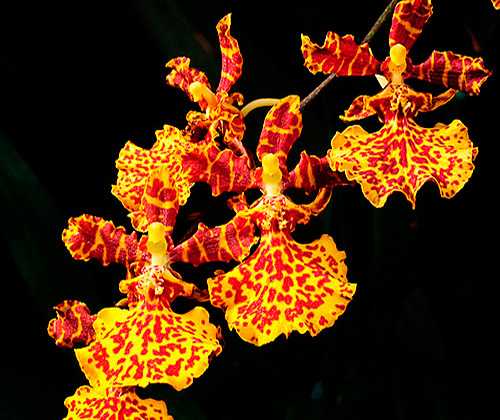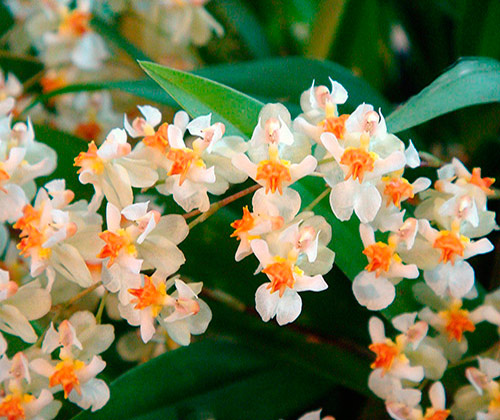Odontoglossum & Oncidium Species
Oncidium & Odontoglossum
The Dancing Lady Orchid!
The Oncidium/Odontoglossum alliance is becoming very popular both for ease of growing and long lasting sprays of flowers. They can be grown both in the home as well as in a sheltered area in the garden. All combinations of Oncidiums and Odontoglossums and related types have been produced through hybridizing and offer a wide range of color patterns as well as cultural flexibility.
Light
Most Odontoglossums and their hybrids prefer filtered, subdued light (from 1000 to 1500 foot-candles). The Oncidiums prefer bright light, much the same as you would give a Cattleya (from 1500 to 4000 foot-candles). The leaves should be bright green as opposed to dark green or reddish green. Reddish green indicates too much light; dark green indicates not enough light.
Water & Fertilizing
Odontoglossums must be kept continually moist (but not soggy and waterlogged) below the surface of the potting media. Oncidiums should become moderately dry between waterings, as do Cattleyas. Generally, they require more water while the new shoot is growing and less once the bulb has formed. Fertilize your plants as least once a month. Good results may be obtained by using high growth 20-10-20 year round and cutting back to half strength when plants are not developing new leaves. Take care to keep water out of the new growth at the base of the plant. Never allow the bottom of the pot to stand in water. Never use artificially softened water.
Humidity
Oncidiums/Odontoglossums enjoy moist air, requiring a minimum of 40-50% humidity in the immediate vicinity of the plant. Humidity should be increased with higher temperatures. The ideal humidity is between 55% and 75%, with as much ventilation or air movement as possible without any cold drafts. Humidity can be increased around the plant by placing the pot on an inverted saucer in a baking pan filled with pebbles, rock chips, etc., and water. Keep water level below top of pebbles so that plant will not have "wet feet" from sitting in water. Morning misting of foliage is also helpful.
Potting
Oncidium types need to be repotted at least every year to 18 months. As a general rule, repot them when the new shoot is two to three inches tall or when new roots appear. All the old mix should be removed from the roots and any dead roots should be removed. If dividing, keep the divisions in clumps of three to five mature bulbs. Medium to fine fir bark is preferred. The base of the new growth should be potted at ½" (no deeper) into the fresh bark. Keep mix barely damp until you see the new roots penetrating the bark, and then resume normal watering.
Temperature
Most Oncidiums and their hybrids are intermediate in their temperature preferences. Ideal temperatures for these would be 75-85 degree highs (day) and 55 -65 degree lows (night) but most grow and bloom well in homes with 70-85 degree highs (day) and 55-75 degree lows (night).
They include Brassidium "Brsdm." (Brassia & Oncidium); Oncidium "Onc."; Wilsonara "Wils." (Cochlioda x Odontoglossum x Oncidium); Odontocidium "Odcdm." (Odontoglossum x Oncidium); Odontonia "Odtna." (Odontoglossum x Miltonia); Miltassia "Mtssa." (Miltonia x Brassia); Colmanara "Colm." (Miltonia x Oncidium x Odontoglossum); Vuylstekeara "Vuyl." (Cochlioda x Miltonia x Odontoglossum); Miltonidium "Mtdm." (Miltonia x Oncidium); Burrageara "Burr." (Cochlioda x Miltonia x Odontoglossum x Oncidium).
Odontoglossums and some of their hybrids are cool in their temperature preferences. Ideal temperatures for them would be 65-70 degree highs (day) and 50-55 degree lows (night) but most grow and bloom well in homes with 65-80 degree highs (day) and 50-65 degree lows (night). They include Odontoglossum "Odm." and Odontioda "Oda." (Odontoglossum x Cochlioda).
